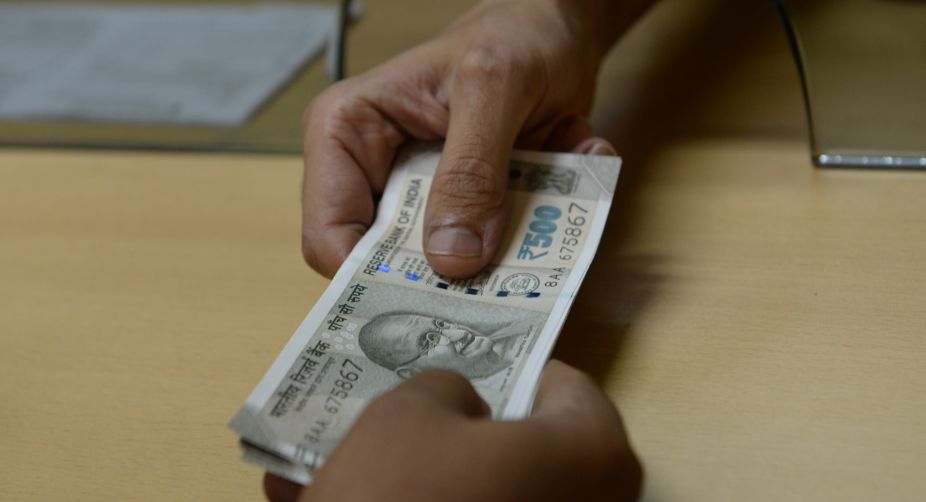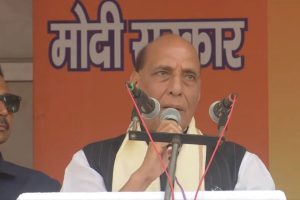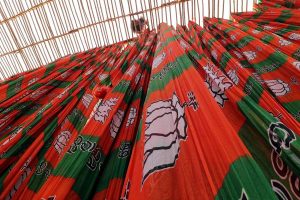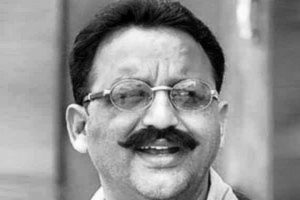The common man struggling with the problems arising post demonetisation, had been expecting a lot from the Budget for 2017-18. From that angle, budget seems to have been an underachiever. Income tax exemption limit remained same, though the rate was halved and those with income of Rs.5 lakh got a relief of Rs.12,500. For more relief perhaps they need to wait till next year. In the name of MSMEs, some relief was given to companies with a turnover of Rs 50 crore or less and they will now pay 25 per cent less tax.
It was being expected that after demonetisation government would be able to get more tax from those who deposited their black money in banks; and that riding on higher tax collections, the government would spend more on education, health and other social services. However, Budget 2017-18 seems to have disappointed people. Though size of the budget at Rs.21.47 lakh crore is bigger by Rs.1.5 lakh crore than the previous year, social services failed to get expected hike in allocation.
Whether it is fiscal deficit or deficit in the balance of payments on current account (CAD), economy is in a much better situation than it was a few years ago. Last year the Finance Minister budgeted for a fiscal deficit of 3.5 per cent of GDP, which has been achieved; for 2017-18, a lower target of 3.2 per cent has been set. If we leave aside the short term pains of demonetisation, the economy seems to be on the track of fast growth, and India continues to be the fastest growing large economy of the world.
Deficit in balance of payments on current account (CAD) which was one per cent of GDP in 2015-16 had come down to only 0.3 per cent of GDP in first half of 2016-17. Our foreign exchange reserves have reached a level sufficient for import bill of 12 months. Finance Ministers claims that inflation is largely under control. On growth, inflation, foreign exchange reserves and fiscal management, economy is in a better position. The FM terms this as a “bright spot”.
It is said in the budget that requisite changes would be made in the law to bring down prices of essential drugs and health equipments. Production of generic drugs would be encouraged. Budget talks about opening new AIIMS also. However, these provisions are not sufficient. People lose their savings and whatever assets they have for treatment of their near and dear ones. According to studies in this regard, nearly 10 per cent people go below poverty line every year, due to this reason only. Therefore it was expected that the budget would provide something big towards public heath which is lacking in Budget 2017-18.
The Budget’s emphasis seems to be on the objective of achieving a smaller cash economy through incentives and infrastructure building. Incentives and cash back an transactions using ‘Bhim App’, making IRCTC railway booking free of cost, taking Optical Fibre Network to 1.5 lakh gram panchayats etc. are some of the efforts made in this budget. These efforts are targeted towards digitisation aimed at bringing in efficiencies in transactions. However confusion prevails on how safe these transactions would be.
Another argument, perhaps rightly so, is that with more digitised transactions, credit worthiness of traders and businessmen would improve and it will help them raise more resources for their growth. With the help of digitisation, government subsidies and other transfers could also reach the right people without any leakage.
The Finance Minister’s major attention and rightly so, has been on rural roads, MNREGA, irrigation, agriculture and allied activities. He has allocated significant amount of funds (to the tune of Rs 1.87 lakh crore). This way his attempt is to make our rural economy stronger. Linking MNREGA to development with a target of building 5 lakh new ponds, is yet another appreciable step. Better allocations for rural roads, the Prime Minister’s housing scheme and rural electrification and similar other programmes are steps in the right direction. Budget allocation for drinking water in arsenic and fluoride affected areas has perhaps been made for the first time.
By providing Rs 4 lakh crore for infrastructure, government has given a boost to infrastructure like rail, road, air transport and power sector. However, we need to keep the same going if the nation is to move on the fast track of development and bring itself to the level of developed countries. Better allocation for defence shows the commitment of the government for country’s national security.
To somehow show that the government is trying to lift all hurdles for foreign investment and also that it is committed to bring ‘ease of doing business’, Finance Minister has proposed closing down the Foreign Investment Promotion Board (FIPB). This shows desperation of the government to get FDI at any cost. This is a cause of concern. It is notable that many a times there are dangers linked to FDI. If FIPB closes down, then restraints on ‘bad FDI’ would go and we may be subject to several threats to our economy and even national security. Government should reconsider this proposal.
Today America and European nations, which themselves had been the proponents of globalisation, are promoting protectionism. President Donald Trump is giving a new doctrine of Buy American – Hire Americans and Britain has severed its ties with the European Union. It seems extremely surprising that our policy makers are still pleading for foreign capital, free trade and globalisation and are willing to go any distance for foreign investment. We need to mend this mindset.
The writer is Associate Professor, PGDAV College, University of Delhi,











